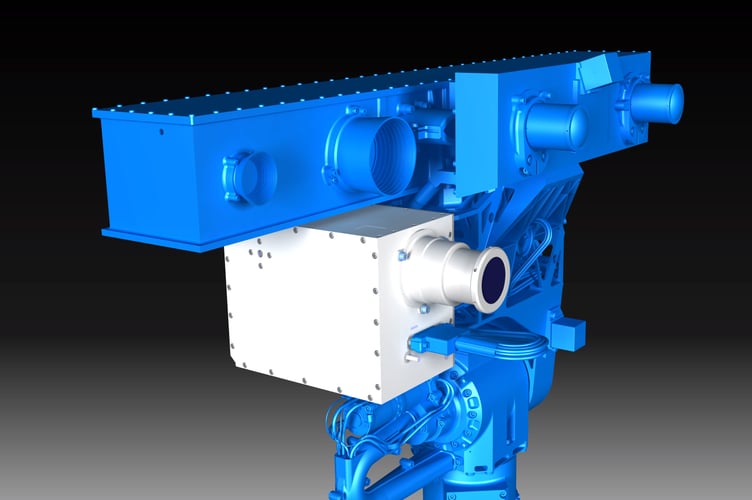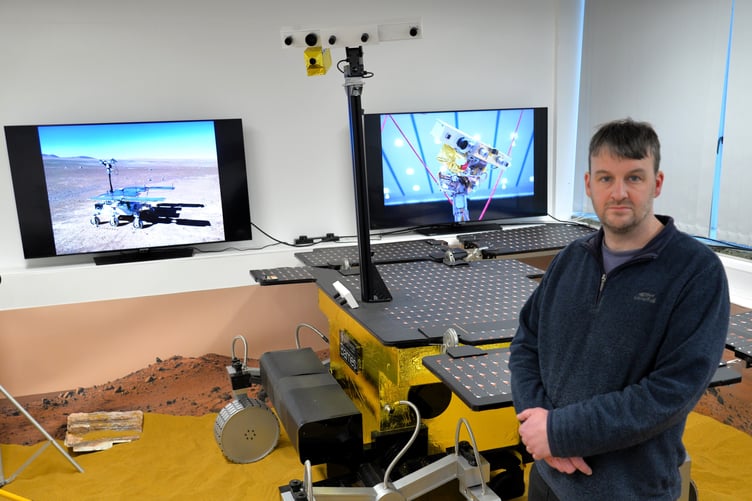SCIENTISTS at Aberystwyth University are to take the lead in a project to replace a Russian-made instrument on Mars rover.
The UK Space Agency is to provide an additional £10.7 million to replace a Russian-made instrument on the Rosalind Franklin rover, so that it can launch to Mars in 2028.
The rover, which was built by Airbus as part of a European Space Agency programme, was due to launch in 2022 but the collaboration with Russia’s space agency (Roscosmos) was cancelled following the illegal invasion of Ukraine.
The new funding will allow a UK team to replace the Russian-built Infrared Spectrometer for ExoMars (ISEM) so that the mission can recover its full scientific potential.
Work on the new instrument, named Enfys (meaning ‘rainbow’ in Welsh), will be led by Aberystwyth University with support from UCL, STFC RAL Space and Qioptiq Ltd.
Enfys will identify targets on the surface of Mars for sampling and analysis, building on the scientific discoveries of the Mars rover mission.
Enfys and the mission’s camera system PanCam, which is led by the Mullard Space Science Laboratory (MSSL) at UCL, will work together to identify minerals that could harbour evidence for life to enable the rover to drill for samples to be analysed by other instruments on the rover.
The £10.7 million brings the total UK Space Agency investment in the Rosalind Franklin rover to £377 million.

Dr Matt Gunn from Aberystwyth University, Principal Investigator on Enfys said: “This is a challenging and complex technical endeavour which has the potential to make a significant contribution to our search for signs of life on Mars. The instrument team, both here in Aberystwyth and in the partnering institutions are all very much looking forward to receiving measurements from the planet’s surface to expand our knowledge of the Mars environment. We learned a lot during the development and testing of PanCam and it is a privilege to be leading the fantastic team of people who will put that knowledge into practice once again to develop a new instrument for the mission.
“I have always been fascinated by space and the technologies used to explore it, and so it is really exciting to be leading the development of one of the mission’s key science instruments. This investment from the UK Space Agency is also a massive endorsement for the quality of space research here in Aberystwyth University, which will have an impact for our world and others for generations to come.”
Dr Paul Bate, Chief Executive of the UK Space Agency, said: “The UK-built Rosalind Franklin rover is a truly world-leading piece of technology at the frontier of space exploration. It is fantastic that experts from the UK can also provide a key instrument for this mission, using UK Space Agency funding.
“As well as boosting world-class UK space technology to further our understanding of Mars and its potential to host life, this extra funding will strengthen collaboration across the fast-growing UK space sector and economy.”
Orson Sutherland, Mars Exploration Group Leader at the European Space Agency said: “With Enfys on board, the Rosalind Franklin Rover is recovering its full capability to perform the assigned ExoMars scientific mission. The instrument will provide key science data working in full synergy with the rest of the payloads.”
Jorge Vago, ExoMars Project Scientist at the European Space Agency said: “We are very happy to implement this key scientific tool, necessary for identifying the most interesting targets for Rosalind Franklin to investigate. Enfys IR data allow us to determine mineralogical composition. This knowledge complements and completes the visual information we obtain from PanCam images. The two instruments will work in tandem.”
Professor Andrew Coates of UCL-MSSL, Principal Investigator of PanCam on the Rosalind Franklin rover said: “It is exciting to enhance the scientific power of PanCam’s wide angle & high resolution visible cameras with improved mineral identification in the infrared thanks to Enfys. Our team are delighted to apply the experience from PanCam to Enfys, for the challenging environment of the Mars surface. We look forward to joint science and operations with Enfys.”
UK work on other instruments includes the University of Leicester, Bradford University and STFC Rutherford Appleton Laboratory as key players in the development of the CCD camera on the Raman Laser Spectrometer (Raman LIBS), which can detect the presence of chemical compounds including minerals and also specific types of “biomarkers” – chemicals indicative of past or present life – that are produced by primitive micro-organisms to enable them to adapt to life in extreme environments.
The announcement comes on the final day of the UK Space Conference which runs from 21- 23 November, at ICC Belfast, a global platform for government, industry and academic space innovators to gather and collaboratively shape the future of space.





Comments
This article has no comments yet. Be the first to leave a comment.